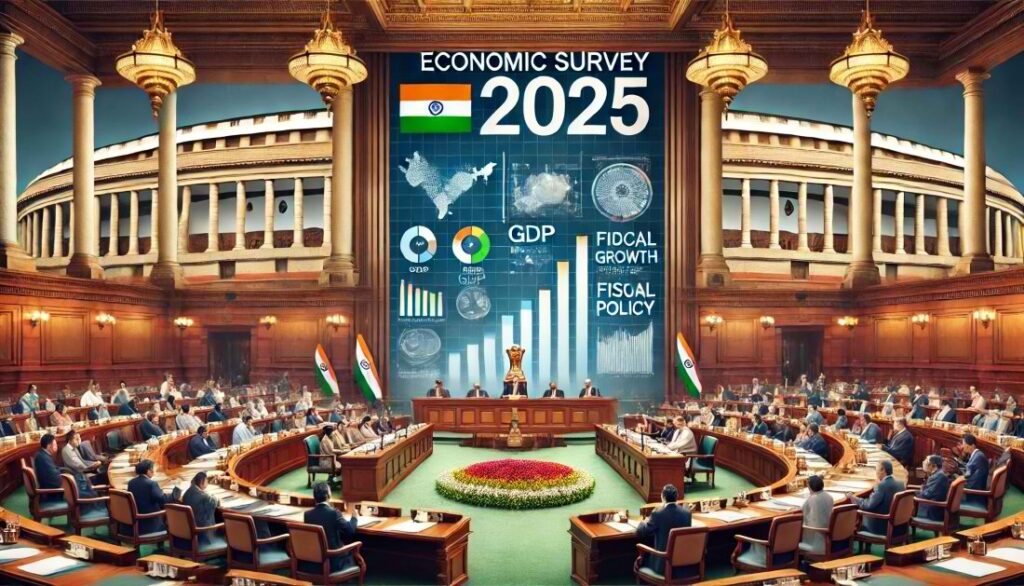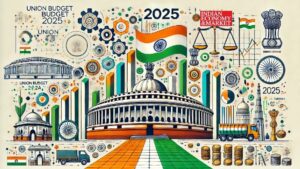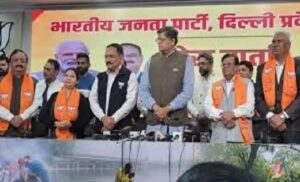Economic Survey reveals: India’s economic condition remains strong
5 min read
From Newsbuddy Desk
On 31 January 2025, the Finance Minister of the Government of India, Nirmala Sitharaman presented the Economic Survey 2024-25 of the country in the Lok Sabha. The first Economic Survey of independent India was presented along with the budget in the year 1950-51. In the 1960s, the Economic Survey was separated from the budget and it started being presented in Parliament a day before the budget. Through the Economic Survey, the country’s economy is reviewed and an attempt is made to bring the possibilities of the economy in front of the country. It is prepared by the Economic Division of the Department of Economic Affairs of the Ministry of Finance under the supervision of the Chief Economic Advisor of the country.
According to the Economic Survey 2024-25 presented in the Lok Sabha, India’s economic condition remains strong. However, due to the economic problems going on in some countries at the global level, India’s economic development is also seen to be adversely affected, but, since India’s internal economy remains strong, the country’s GDP growth is expected to be between 6.3 percent and 6.8 percent in the financial year 2025-26. In recent times, there has been a boom in the demand for products in rural areas and the growth rate of GDP of the agricultural sector is likely to increase because due to good monsoon in the country, the Rabi crop is expected to be at a very good level and this will also reduce the inflation rate of food items, which will increase the availability of money in the hands of the citizens to buy other products. Today, only the inflation rate of food items remains somewhat high, otherwise the core inflation rate has already come under control. The overall inflation rate will also come under control in the first half of the financial year 2025-26. Also, the possibility of reduction in crude oil prices in the international market has also been expressed. India today imports 87 percent of its total crude oil demand. If the price of crude oil reduces, then inflation in India will also reduce.
The higher the number of middle class families in any country, the higher will be the growth rate of that country’s GDP because the demand in the economy for buying various products is generated through this class. Therefore, efforts should be made in the country to ensure that more money is available in the hands of middle class families. However, inclusive development has taken place in India because the number of poor has decreased rapidly and to a great extent. But, every effort should be made to ensure that the families who have recently come above the poverty line and joined the category of middle class families do not go below the poverty line again.
Due to the economic problems occurring in various countries at the global level, the export of various products manufactured in India is not registering as much growth as is required to keep the rate of economic growth above 8 percent. Due to this, the foreign trade deficit is also increasing continuously. Along with this, a decrease is also visible in India’s foreign exchange reserves. There is also a constant pressure on the value of rupee in the international market. However, the decline in foreign investment has been described as a temporary problem and with the improvement in the conditions in various countries and the stabilization of economic policies in the US, foreign investment in India will start increasing again. India’s GDP growth rate is expected to be 6.2 percent in the financial year 2024-25.
The main reasons for the decline in the growth rate include the code of conduct being implemented due to the Lok Sabha and assembly elections in some states in the country, due to which the central government and some state governments had to stop their capital expenditure. Till November 2024, only Rs 5 lakh crore of capital expenditure has been made by the central government, whereas on an average Rs 90,000 crore of capital expenditure should have been made per month. Because, the budget for the entire year for capital expenditure was fixed at Rs 11.11 lakh crore. Now it is being speculated that only Rs 9 lakh crore of capital expenditure can be made in the financial year 2024-25.
There has also been a decrease in the tax paid by various companies and the profitability of some companies has been adversely affected. Companies whose profitability has remained at a very good level are expected to increase their capital expenditure along with the Central Government so that new manufacturing units can be established in the country and the supply of various products can increase, crores of new employment opportunities can be created and inflation can be controlled.
Private companies should especially increase their participation in strengthening the infrastructure in the country. The Reserve Bank of India should now seriously consider reducing interest rates so that the production cost of goods produced by manufacturing units can be reduced and in any case, inflation has now come under control. The Reserve Bank of India has recently increased liquidity in the money market by an amount of Rs 1.5 lakh crore, which will make it easier for banks to provide loans to various companies, farmers and businessmen.
The Economic Survey also states that the size of the GDP in the financial year 2022-23 was Rs 273 lakh crore, which increased to Rs 295 lakh crore in the year 2023-24, now it is expected to be Rs 324 lakh crore in the financial year 20224-25 and Rs 357 lakh crore in the financial year 2025-26. Thus, it is possible that India can become the third largest economy in the world in the next 2/3 years. Similarly, the budget deficit which was 6.4 percent in the financial year 2022-23 and 5.6 percent in the financial year 2023-24 is now expected to decrease to 4.8 percent in the financial year 2024-25 and 4.5 percent in the financial year 2025-26. Thus, the efforts of the Central Government to continuously keep the financial position of the country strong have been successful. The total income in the budget of the Central Government is likely to be Rs 34.3 lakh crore and the total expenditure is likely to be Rs 50.3 lakh crore, due to which the budget deficit may be Rs 16 lakh crore.







